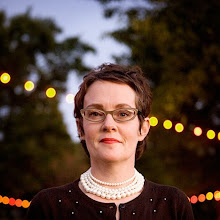
Mona Hatoum World, 2004, at Site Santa Fe
Over the past fifteen years or so I have been lecturing, curating, traveling and teaching about how non-Western artists have reinvigorated Western Modernism by reinterpreting it from many different perspectives. When cultural tourism allowed for a wide range of Western curators to visit new places--like the Johannesburg or Istanbul biennials--how to place non-Western artists into a Western historical context became a topic of some importance.
How not to repeat the problems of MoMA's Primitivism show or the Pompidou's Magiciens de la Terre, where the curatorial premise reduced whole continents of artist's works into a formal mimicry of Western modernism?
It all boils down to context context context (location location location, or the place from whence you view the work).
Of course many institutions will work with non-Western artists to be fashionable, but to truly understand the intellectual import of these artist's work in considering post-independence Africa or Palestinian diaspora for example, is another thing.

Gabriel Orozco in How Latitudes Become Forms: Art in a Global Age, Walker Art Center, 2003
Hatoum's work, above, is the globe in marbles. One false move, one petulant kick, and the whole thing goes haywire.
Orozco's installation, below, is a maze punctuated by signifiers of travel--a train or plane ticket--to suggest the dislocation of travel, flight, emmigration, diaspora. Both these artists rely on their own cultural histories to vault across the brittleness of late, mannered Modernism to create a fresh, vibrant world for us to consider. Imperialism is as much intellectual as actual, and these artists raise those issues in new ways.
I hope to be exploring some of these ideas with some of these artists, over the next few years, at Laumeier Sculpture Park and through my teaching at the University of Missouri-St. Louis. Because of the uniqueness of our space, we have some great opportunities to vault beyond what a traditional institution can do and see what the second decade of the 21st century will hold.




















































